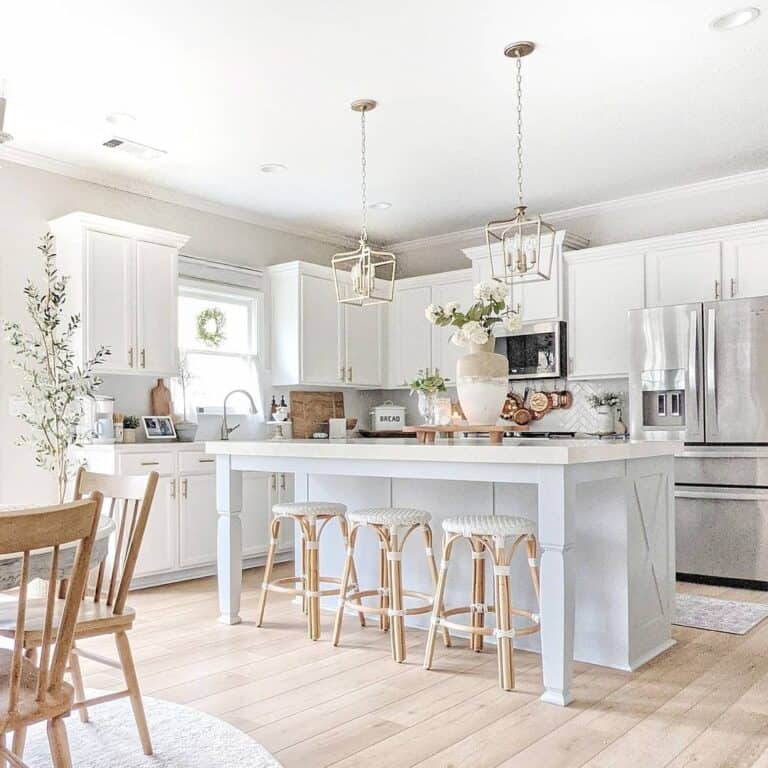Make Your Kitchen Island Stand Apart with Personalized Legs For Kitchen Island
Make Your Kitchen Island Stand Apart with Personalized Legs For Kitchen Island
Blog Article
Essential Factors to Take Into Consideration When Choosing Legs For Kitchen Island
Picking the suitable legs for a cooking area island includes a mindful assessment of several variables that can substantially influence both functionality and aesthetic charm. As we explore these components, it comes to be clear that each choice can have far-ranging implications for the general kitchen experience.
Product Options
When picking legs for a kitchen area island, comprehending the various product alternatives is vital for accomplishing both visual charm and structural integrity (Legs For Kitchen Island). The choice of material considerably affects not only the durability of the island yet also its overall design and capability
Wood is a prominent selection, supplying heat and versatility. Strong woods, such as oak or maple, offer stamina and can be stained or painted to match the kitchen design. Metal legs, frequently made from stainless steel or wrought iron, add a contemporary and commercial feel while making sure longevity and security. These products are resistant to use and can support considerable weight, making them optimal for larger islands.
One more alternative is crafted products, like MDF or plywood, which can be more cost-efficient while still using a variety of finishes. However, they might not give the very same level of security as strong timber or steel. Products such as acrylic or glass can produce a contemporary appearance, though they might require added assistance to make certain stability.
Ultimately, the selection of product for kitchen area island legs should straighten with the desired performance and the overall style of the kitchen area.
Style and Layout

When taking into consideration style, the shape and coating of the legs are crucial. Tapered legs can provide a feeling of agility and sophistication, while thicker, extra durable legs can communicate toughness and stability. Furthermore, the surface-- be it painted, tarnished, or all-natural-- ought to complement the cabinetry and kitchen counter materials to produce a unified look.
In addition, the design of the legs can likewise show personal taste. Custom or decorative legs, such as those featuring intricate makings or distinct geometric forms, can work as centerpieces, including personality and personality to the cooking area. Inevitably, the right option will not only improve capability yet additionally boost the aesthetic appeal, making the kitchen area island a standout feature of the home.
Height Factors To Consider
Picking the appropriate elevation for cooking area island legs is important, as it straight impacts both performance and convenience. The basic elevation for a cooking area island usually varies from 36 to 42 inches, aligning with common counter top elevations.

It is likewise vital to account for customers' elevations and preferences. Tailoring the elevation can guarantee a comfy experience for all relative, making the kitchen area island a more functional and satisfying space.
Weight Assistance
Guaranteeing adequate weight support for kitchen island legs is crucial for both safety and performance. The kitchen island commonly serves numerous purposes, consisting of food preparation, dining, and added storage, demanding a robust support framework. When selecting legs, it is vital to consider the total weight capability called for based on the island's meant usage and the materials that will be positioned on it.
The choice of material for the legs plays a substantial role in their weight-bearing abilities. Strong timber, metal, and durable compounds generally offer remarkable toughness compared to lighter materials. Furthermore, the layout of the legs-- whether they are straight, tapered, or have a pedestal form-- can influence their capability to disperse weight effectively across the structure.
Additionally, the leg positioning should be strategically prepared to link improve security. Legs placed at the edges or with a bigger base can better support heavier loads. Always seek advice from the supplier's requirements regarding load limits to guarantee that the legs can sustain the designated weight without jeopardizing security. In summary, choosing cooking area island legs with sufficient weight support is vital for producing a practical and risk-free culinary area.
Installment and Maintenance
Proper installment and upkeep of cooking area island legs are essential for making certain longevity and security. This commonly entails protecting the legs to the island base utilizing proper fasteners, ensuring that the legs are degree and aligned.
When mounted, routine upkeep is necessary to protect the stability and look of the legs - Legs For Kitchen Island. For click for source wooden legs, regular cleansing with a damp fabric and application of ideal wood polish can protect against moisture damage and keep their finish. Metal legs may call for a gentle cleaning option to get rid of grease and grime, complied with by a completely dry cloth to avoid corrosion development
Additionally, inspect the legs on a regular basis for indicators of wear or damages, such as splits or loosened joints. Tightening up screws or screws as required can additionally lengthen the life-span of the legs. By sticking to these installment and upkeep techniques, home owners can ensure that their kitchen island remains sturdy and aesthetically appealing for several years ahead.
Verdict

Visual comprehensibility is paramount in choosing the design and style of legs for a cooking area island, as these elements significantly influence the general atmosphere of the room. Conical legs can give a feeling of agility and elegance, while thicker, much more robust legs can communicate stamina and stability.Selecting the proper elevation for kitchen area island legs is critical, as it straight influences both capability and convenience. In recap, picking cooking area island legs with ample weight assistance is crucial for developing a secure and useful cooking area.
In final thought, selecting legs for a kitchen island necessitates mindful factor to consider of numerous aspects, consisting of material choices, style, height, weight assistance, and setup.
Report this page